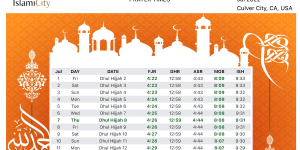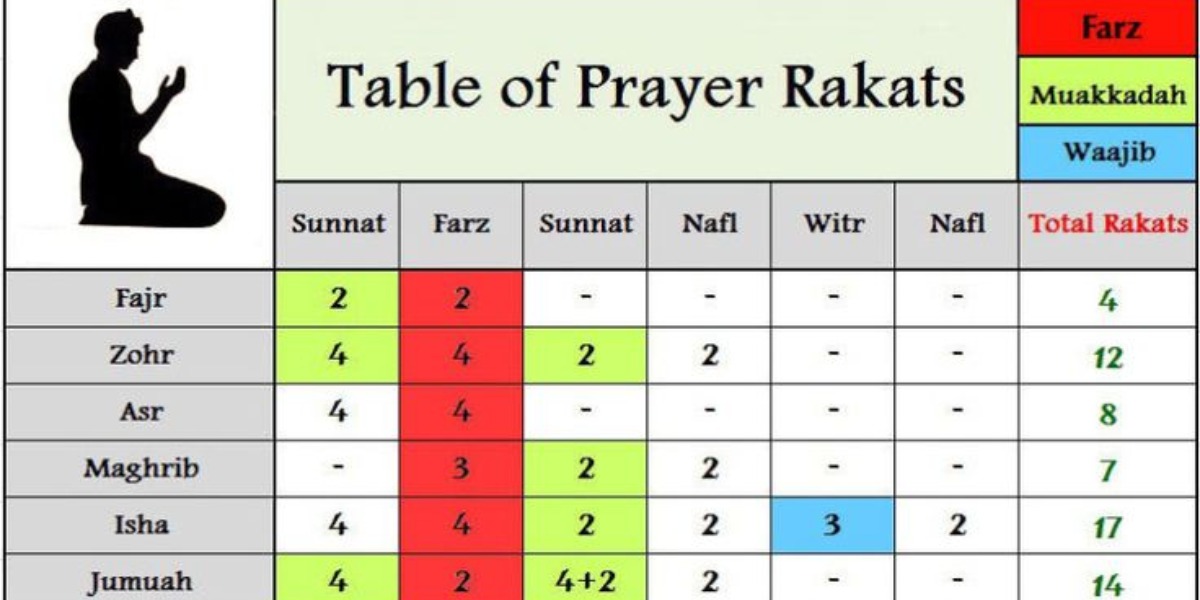Namaz Table
Namaz, or Islamic prayer, holds profound significance in the lives of Muslims. The Namaz Table serves as a guide, outlining the specific timings for each prayer throughout the day. Let’s delve into the essence of the Namaz Table and its importance in Islamic practice.
What is the Namaz Table?
The Namaz Table, also known as the Salah timetable, provides a structured schedule for performing the five obligatory prayers in Islam: Fajr, Dhuhr, Asr, Maghrib, and Isha. It serves as a reminder for Muslims to engage in regular prayer, aligning their daily routines with spiritual devotion.
Significance of Prayer Timings
Fajr – The Dawn Prayer
Fajr marks the beginning of the day and is observed before sunrise. It symbolizes awakening and seeking guidance from the Divine as one embarks on a new day’s journey.
Dhuhr – The Noon Prayer
Dhuhr is performed when the sun begins to decline after reaching its zenith. It signifies gratitude and reflection amid the day’s activities, offering a pause for spiritual rejuvenation.
Asr – The Afternoon Prayer
Asr is observed in the late afternoon, symbolizing perseverance and steadfastness in the face of life’s challenges. It serves as a reminder to maintain faith and seek strength from Allah.
Maghrib – The Evening Prayer
Maghrib is offered just after sunset, marking the transition from day to night. It represents gratitude for blessings received throughout the day and serves as a moment for introspection and supplication.

Isha – The Night Prayer
Isha is performed after twilight has vanished, representing the conclusion of the day. It signifies seeking forgiveness for shortcomings and seeking guidance for the night ahead.
Importance of Following the Namaz Table
Adhering to the Namaz Table fosters discipline and spiritual connectivity in the lives of Muslims. It instills a sense of mindfulness and devotion, guiding individuals towards a balanced lifestyle that integrates religious observance with daily responsibilities.
Utilizing the Namaz Table Effectively
To make the most of the Namaz Table:
- Consistency: Establish a consistent routine for prayer, adhering to the designated timings outlined in the Namaz Table.
- Preparation: Familiarize yourself with the specific prayer timings for your location, ensuring accurate observance according to local sunrise and sunset times.
- Intention: Approach each prayer with sincerity and devotion, understanding its significance in strengthening your bond with Allah.
- Community: Encourage communal prayer whenever possible, fostering unity and solidarity within the Muslim community.
The Namaz Table serves as a beacon of guidance for Muslims worldwide, facilitating the observance of daily prayers with diligence and devotion. By embracing its significance and adhering to its teachings, individuals can cultivate a deeper connection with their faith, enriching their lives with spiritual fulfillment and inner peace. May we continue to uphold the tradition of prayer, drawing closer to Allah with each prostration and supplication.
Asr Prayer Time Dubai
Dubai, a city known for its modern skyline and cultural richness, observes ASR prayer time with reverence. The vibrant cityscape comes to a pause as residents and visitors alike gather for this significant afternoon prayer. The ASR prayer time in Dubai reflects the city’s commitment to religious traditions amid its cosmopolitan lifestyle. Embrace the spiritual ambiance and dedication to prayer that define the ASR prayer time in Dubai, fostering a sense of unity and tranquility within the dynamic city.




